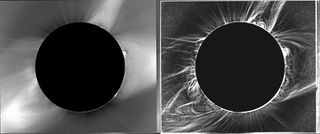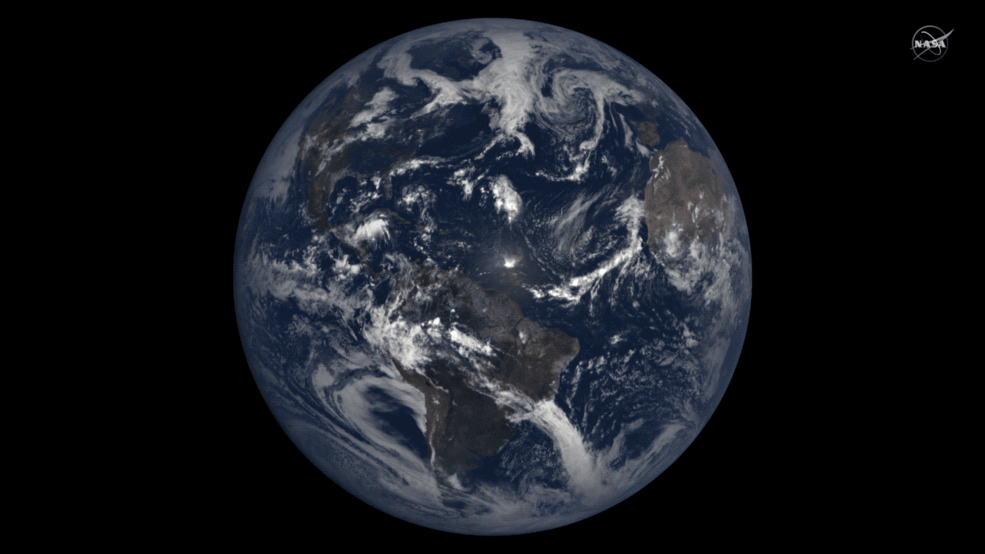Citizen-Scientists Shined Bright During 2017's Great American Solar Eclipse

NEW ORLEANS — The sun revealed its secrets to volunteers across the nation when it hid behind the moon during the Great American Solar Eclipse of 2017.
As part of a project led by National Science Foundation's National Solar Observatory (NSO), teams of citizen-scientists observed the previously hidden roots of solar plumes, eruptions of material from the sun's poles, down to the surface of the sun.
"Polar plumes have been seen before, but not in this region of the corona," Matthew Penn told Space.com. A solar researcher at the NSO, Penn is the project chair of the Citizen Continental America Telescopic Eclipse Experiment (CATE), which set up telescopes with 68 teams of volunteers spread across the path of the eclipse. The group was able to image the sun closer to the surface than other instruments during the incredible phenomena. Penn presented the results at the American Geophysical Union meeting here on Dec. 11. [Related: How a Solar Eclipse Captivated America in 2017]
"This was just due to the dedication and hard work of all of our volunteers," Penn said.
Filling in the holes
On Aug. 21, the continental United States experienced a total eclipse of the sun. For the first time in almost a hundred years, the shadow of the moon marched across the country from the Pacific Ocean to the Atlantic. Although the eclipse path was only about 70 miles wide, a partial solar eclipse was visible to everyone in the lower 48 states.
Penn and the Citizen CATE team planned to use the eclipse as a special solar filter to reveal the sun's secrets. As Earth's closest star, the sun always has an array of telescopes pointed at it, both on the ground and in space. Most observers use a coronagraph, a round shield that blocks the body of the sun, to prevent their instruments from being overwhelmed by light. This creates a data-free doughnut hole in the center, and it's this hole that Citizen CATE hoped to fill. [Amazing Photos: Relive the 2017 Total Solar Eclipse]
According to Penn, space-based observations could only glimpse structures about 1 solar radii from the star. By using the moon instead of a coronagraph, most of Citizen CATE's teams could peer right down to the surface, with the best observations improving previous measurements by a factor of 100.
Get the Space.com Newsletter
Breaking space news, the latest updates on rocket launches, skywatching events and more!
"The moon does a great job," Penn said.
Polar plumes emerge from the sun's north and south pole. According to NASA, these structures are associated with open magnetic field lines at the sun's poles and are related to the solar wind.
"We know that [the plumes] are the source of the fast solar wind, but we don't know how the wind is accelerated," Penn said. [Amazing 2017 Solar Eclipse Photos From Space]

The nationwide project put telescopes in the hands of students ranging from the eighth grade all the way up to graduate school, as well as adults. Of the 68 sites spread across the path of the eclipse, 61 collected usable data. The result was 83 minutes out of a possible 93 minutes of eclipse observations, Penn said.
"At all times, at least one CATE telescope was in the shadow, looking at the corona," Penn said.
While previous measurements charted the plumes at 20,000 miles per hour farther from the sun, Citizen CATE captured a much more rapid evolution at the poles. Penn said the plumes were leaving at about 200,000 miles per hour.
With the 2017 eclipse behind them, Penn hopes Citizen CATE will continue for the 2023 eclipse.
"It's a completely different route," Penn said. "The interesting thing is that it goes across Mexico and Canada, too, which adds a whole international component."
Follow Nola Taylor Redd on Twitter @NolaTRedd or Google+. Follow us at @Spacedotcom, Facebook or Google+. Originally published on Space.com.
Join our Space Forums to keep talking space on the latest missions, night sky and more! And if you have a news tip, correction or comment, let us know at: community@space.com.

Nola Taylor Tillman is a contributing writer for Space.com. She loves all things space and astronomy-related, and enjoys the opportunity to learn more. She has a Bachelor’s degree in English and Astrophysics from Agnes Scott college and served as an intern at Sky & Telescope magazine. In her free time, she homeschools her four children. Follow her on Twitter at @NolaTRedd
